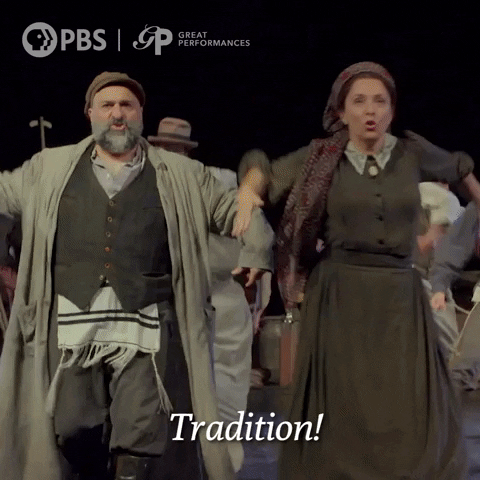The misguided logic sustaining the sports game story
A few cranky readers and old habits are not smart reasons to sustain something the main audience doesn't want.
Wednesday we explored why I believe deploying sports reporters to recap events is a waste of time, money and talent. This is based on the realities of the modern era and the modern audience. We live in a time when information is passed instantaneously and sports fans will go to ridiculous lengths to stay apprised of their favorite team(s). (Insert the many commercials of the groomsmen trying to sneakily watch sports on their mobile phone during their friend’s wedding here.)
If that’s the audience sports departments are trying to serve today, devoting a writer to author a recap of events most of the audience has already appears to be a pretty questionable decision. So, given the flagging traffic numbers to game stories compared to other types of sports writing (columns, analysis, etc.) why do these relics endure?
Old man yells at cloud. Cloud concedes.
First, comes the lesser of the two reasons: Audience pushback.
I know what you’re thinking: Wait, wait, wait … Mike, I thought the audience didn’t want game stories?
This is true. But does some part of that audience want game stories? For sure. Again, audiences are not monoliths. So there is some portion of an established audience, likely subscribers, who likes the experience as it is, who likes game stories that simply recap the events of last night’s events, because that’s the experience they’ve enjoyed for years and years and years. And the reason they like those game stories and find utility in them is because they are likely 70-years-old and fell asleep at 8:30 the night before.
Am I generalizing there? Yes. But based on the evidence I’ve seen, there is no doubt the average age of a game story reader skews older.
So, what happens when you take away that game story experience? Then sports editors get a message in their inbox from Jebediah1956@aol.com complaining about how things aren’t as good as they used to be and how the quality of [insert your news institution here] is slipping and how this never would have happened under the watchful eye of [insert the name of your predecessor here] and how they’re going to unsubscribe if things don’t go back to the way they were. And there are multiples of these emails when editors try to implement change, sometimes upwards of like … 10.
I know what you’re thinking: Wait, wait, wait … Mike, I thought that was going to be a really big number, like a statistically significant number that would have a major impact on a news outlet’s bottom line, maybe even big enough to choke off its existing revenue. But 10? That doesn’t … that doesn’t seem like a lot.
Nope. Not statistically anyway, but they are readers, and loyal ones. And the people making these decisions want to make their readers happy. That’s natural. Those emails are also a harbinger that, if you go through with these changes in full, there is going to be some pain and discomfort coming your way. Editors in the modern news era deal with enough stress just putting out a section every day, managing a financial/content budget, managing a staff, incorporating audience insights and new workflows and … and … and … . There’s a lot.
So do I understand if there’s some hesitation towards a decision that almost surely will not be universally popular and add more grief to their daily menu? Absolutely. Particularly when there’s also another internal force at play in newsrooms where a lot of the staff has been around for a long time and appreciates the history of the game story in journalism.
Tevye, if you will …
This is the way we’ve always done it
Like many of the outdated story types media companies, newspapers in particular, rely upon for content, the game story has a long and glorious history in journalism. And I will certainly agree that some of the best writing you can find anywhere in a newspaper can be found in game stories. The best writers will fill those inches with punchy leads and vivid visuals that can place the reader inside an event as though they, themselves were there.
There absolutely is great beauty in stories like that. I can appreciate that perspective. But also, these days, they are awfully rare. And if you look at the financial realities of the modern media world, satisfying a small minority of customers and adhering to tradition for tradition’s sake is not reason enough. Clinging to that perspective misses the larger reality.
If no user feels the need to click on a beautifully written story because they think they already know all of the useful information (particularly when the story carries a headline like, “Celtics fall victim to 3-point barrage by shorthanded, undersized Heat in Game 2”) does the beauty of that story matter?
Of course it matters, particularly to its author and also to the editors who worked hard to craft it, tidy it up and, if necessary, meticulously trim it down for print. Only problem is, they are not the audience. They are not the customer. The people clicking on the story and/or subscribing are the customers. And the people who aren’t clicking are potential customers that you will never reach unless you start paying attention to what they want and don’t want.
The best way I can frame this debate is via cinema. The classic journalism crowd, who appreciates the artistry and skill required to make a game story sing? That’s Martin Scorsese. But the audience is comprised of Marvel movie fans. Scorsese doesn’t appreciate Marvel movies like the mainstream audience, doesn’t see the artistic appeal in them and doesn’t particularly care if the mainstream audience doesn’t share his view because he’s Martin freakin’ Scorsese. Dude’s famous, dude’s rich and dude don’t care about anything in this debate more than the art of cinema because that wasn’t the perspective he grew up with. Also notable in Scorsese, a content creator, holding this personal belief: He doesn’t have to care if the mainstream audience disagrees because he is an artistic legend who is set for life. You know who’s not set for life? People who work in journalism.
So while writers and editors and executives can and should absolutely appreciate the finer points of story crafting, they should also absolutely appreciate how much audience (and revenue) are generated by Marvel movies.
So, how do you square this?
The merits of the super team
To again borrow from Marvel, ahem, “What if …” there was a product that combined the audience appeal of a super hero flick with the in-depth character studies that appeal to Martin Scorsese? That sure sounds like a good product to me. So how to we translate that to sports coverage?
In the conversations I’ve had with people on this topic, a false logic usually surfaces that this is an either/or decision. Kill the game story or just keep it as is. But there are absolutely alternatives to traditional recaps that can better serve the audience and we discussed a number of them Wednesday.
But I’d reshape this discussion even more by suggesting that this isn’t about debating the merits of the game story, so much as re-evaluating an outlet’s coverage of teams holistically and how the game story (or an alternative, as would be my preference) fits into that coverage. And in this process, you should start by thinking about what fans of the teams you cover want from you.
Broadly, at any given moment, fans want to know about the state of the team. What’s their record? What are their playoff odds? Who’s performing well? Who’s underperforming? Who are the up-and-coming players? What could the offseason look like? Who’s injured? Yes, game results are a part of that, but one score out of 82 or 162 games probably doesn’t matter that much unless the game included a significant injury, milestone or greatly impacted a team’s chances at a playoff spot or better draft position.
From a content producer perspective, the schedule makes for a very simple and reliable rubric for setting up media coverage because on game nights you know you’ll have “something.” But again, that misplaces the focuses on the producers and not the audience. From an audience perspective, that thinking really only works for a print reader who is happy with whatever you serve up because that’s all they’re going to read about their team before playing bridge with Agnes and hitting up the early bird special at Olive Garden. That is not the modern audience.
In an online world with so many outlets competing for fans’ attention, “something” doesn’t cut it. As often as possible, you need to produce the best possible content. And that is almost never a game story.
The reason places like ESPN and The Athletic excel at sports coverage is because they serve fans on so many different levels. It’s never just one story. It’s a barrage of insights and information and statistics that allow fans to stay engaged for hours and know they can get more the next day. And that content is coming from a variety of important, insightful voices: Reporters, columnists, statistical analysts, former pros, coaches and front office personnel. All together, it’s a super team of sports content creators. This is an optimal experience to me. That’s what outlets should strive for if they want to best serve an audience of fans.
Still skeptical? Consider the incoming comet.
There will absolutely be inertia, both internally and from readers, as outlets look to pivot from any practice they’ve made a mainstay of their coverage for decades, but when it comes to the game story, I think this evolution is essential. I say that not just because of the demand side of the equation and listening to what the audience wants, but also from the supply side.
Game stories, at their bare-bones core, are nothing more than a collection of events and statistics, colored with a few quotes. Automated feeds for play-by-play information and box scores already provide the data inputs needed to reconstruct the events of game using generative artificial intelligence. The Washington Post dipped a toe into AI recaps for the Olympics when I worked there.
In the upcoming era of AI, a human is not required to put that recap article together. Even if you want quotes, you can just stack a transcription service into the model.
It won’t be like the good old days with Shirley Povich perched in the press box. A computer probably can’t even write as well as little old me right now. But will it produce a product functional enough to fill a print hole and allow a media executive to seriously question why their company is spending hundreds of thousands of dollars in salary and travel expenses to send a reporter around the map covering a last-place team and produce content that doesn’t drive an audience? Absolutely.
Got thoughts on the game story? Submit your comments below, particularly if you feel I’m off base in my thinking. Think one of your friends or colleagues would appreciate or debate this perspective? Share the link and encourage them to join the community. Thoughtful discussion will elevate any product.
Hope you enjoy your weekend!
Coming Monday: ::Seinfeld voice:: “What’s the deal with service journalism?”
Hi, I’m Mike. I’m a former editor for The Washington Post and ESPN. In 2024 I founded and now operate Launcher, LLC, a digital media consultancy operating out of Arlington, Va. Want to work together? Reach out on LinkedIn.






